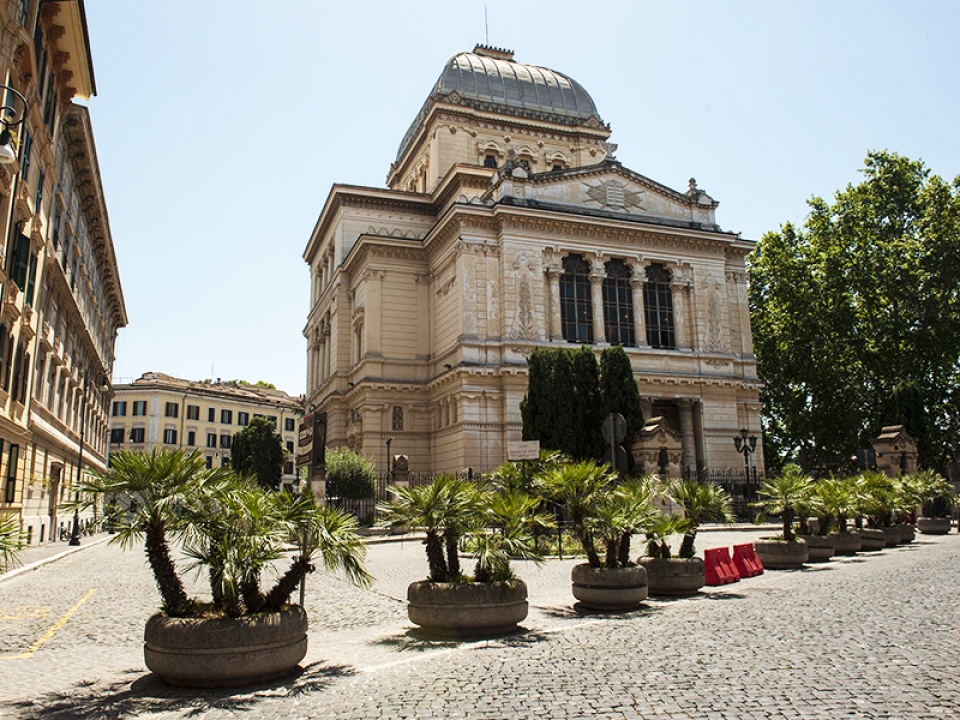
Rome is home to one of the oldest Jewish communities in the world. Its history is closely intertwined with the events of the Roman Catholic Church and the papacy, which over the centuries has played the roles of both protector and persecutor of the Roman Jews. Culturally rich and vibrant, even though it is spread out throughout the city, the Roman Jewish community still has its center of gravity in a small patch of land near the Tiber River where their ancestors were confined by Pope Paul IV: the Ghetto.
And right in the ghetto, a neighborhood full of history, where you find the Jewish Museum of Rome, a little gem housed in the complex of the Great Synagogue, opened in 1960 to preserve the testimonies of the Jewish Community of Rome. In its 700 square meters, about 400 Roman silver pieces from the seventeenth and eighteenth centuries are displayed, nearly 1000 precious fabrics from all over Europe, casts, marble, and illuminated scrolls that tell the history of two thousand years of Roman Jews.
It is not only the impressive synagogue, built in 1874 and facing the Tiber Island, which attracts many visitors who come to visit, but also the Roman, medieval and renaissance ruins in Via del Portico d'Ottavia, the symbolic center of the district along with Piazza delle Cinque Scole. An architectural hybrid surrounded by tall, Umbertine palaces moving towards the Tiber which exemplify the different building stratification in the neighborhood. These layers are perhaps matched only by the wide wine and food offerings in the district. In the ghetto of Rome it is also possible to sample the authentic, traditional, Roman-Jewish cuisine and choose from many kosher eateries there, and the best bakery in town.
The Ghetto is also a place of memory. In fact, there are many testaments to the Nazi persecution and one of its squares, named after the date of the largest sequestration of Jews in the history of Italy: Piazza 16 Ottobre 1943. That day, roughly 1,000 Jews, mostly women and children, were rounded up and deported to Auschwitz where almost all perished.
The Jewish Rome is, however, more extensive than the ancient perimeter of the ghetto. All over Rome you can attend and visit many temples with different customs - Sephardic, Italian, Moadim - and discover the traces of Jewish presence even in the Roman Forum or the archaeological site of Ostia Antica.



